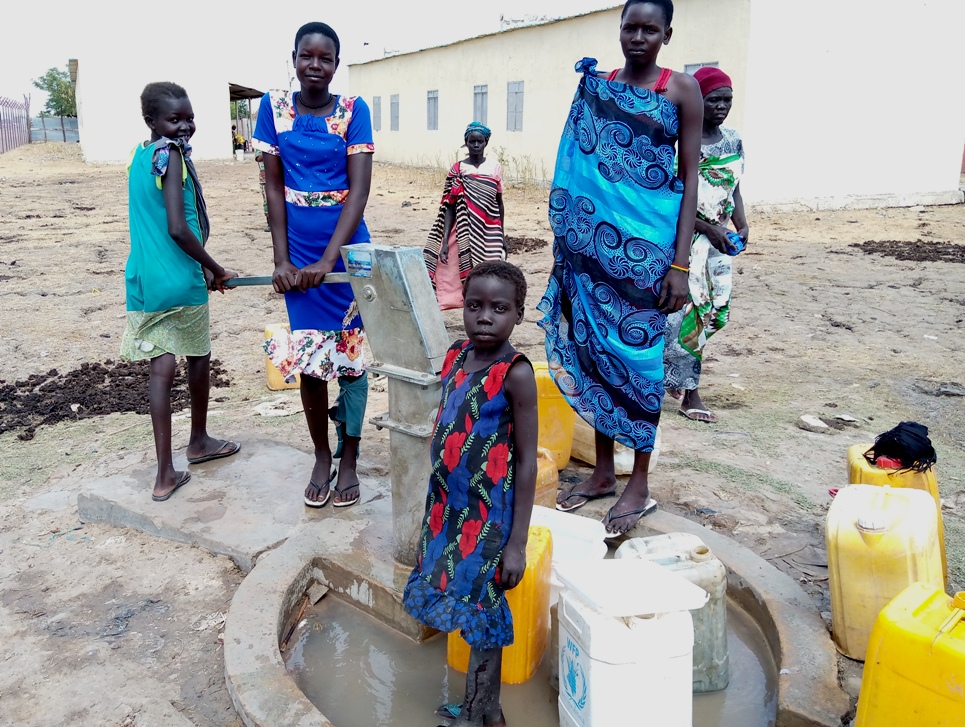Unpacking results-based financing: balancing strengths with weaknesses
 As development partners increasingly adopt private sector business practices to strengthen impact and sustainability, the RBF or Payment by Results model is being utilized to promote performance and accountability across a variety of sectors from health, agriculture, land governance and education to water, sanitation and hygiene (WASH) interventions.
As development partners increasingly adopt private sector business practices to strengthen impact and sustainability, the RBF or Payment by Results model is being utilized to promote performance and accountability across a variety of sectors from health, agriculture, land governance and education to water, sanitation and hygiene (WASH) interventions.
Results-Based Financing (RBF) is being adopted by a growing number of humanitarian agencies, financial institutions and governments over recent decades writes Christopher Burke.
As development partners increasingly adopt private sector business practices to strengthen impact and sustainability, the RBF or Payment by Results model is being utilized to promote performance and accountability across a variety of sectors from health, agriculture, land governance and education to water, sanitation and hygiene (WASH)interventions. By directly linking the disbursement of funds to the achievement of measurable, pre-agreed results or outcomes, the RBF approach incentivizes service providers to focus on the delivery of tangible results.
As with any financing model, RBF of course has both strengths and weaknesses. The primary strength of the RBF model lies in its ability to incentivize performance. By tying funding directly to results, RBF approaches encourage service providers to improve efficiency, innovate service delivery and be more accountable for outcomes. This aligns the interests of service providers with the end goals of the programme or intervention driving positive change.
Unlike traditional financing models that often prioritize inputs or activities, RBF places a strong emphasis on outcomes and results. This shift in focus encourages service providers to concentrate on activities that are most likely to yield measurable improvements for beneficiaries. By holding service providers accountable for achieving specific results, the RBF approach ensures resources are directed towards interventions that have the greatest impact.
RBF mechanisms are inherently flexible and allow for adaptation to different contexts, priorities and objectives. This flexibility enables stakeholders to tailor interventions to specific needs and circumstances while selecting appropriate indicators, targets and payment structures that align with their goals. By accommodating diversity and complexity, the RBF approach enhances the relevance and effectiveness of interventions across various settings.
Transparency and accountability are the cornerstones of the RBF approach. They require a clear definition of expectations and measure performance against predetermined indicators, and publicly reported results. Transparency fosters accountability among stakeholders, including service providers, funders and beneficiaries, to ensure that progress towards outcomes is visible and measurable. By holding stakeholders answerable for their actions, the RBF approach enhances trust and confidence in the delivery of services.
A key challenge to the implementation of the RBF model is the complexity associated with definitions and measurements of exactly what constitute results. Outcomes are often influenced by factors beyond the control of service providers making it difficult to attribute changes solely to their actions. Ensuring the reliability and validity of performance indicators requires careful consideration, robust planning, data collection, monitoring and evaluation systems that can be resource-intensive and time-consuming.
RBF incentives may inadvertently lead to gaming behaviors with service providers prioritizing activities that are easily measurable or directly incentivized over actions that contribute to sustainable outcomes. This can give rise to unintended consequences including the neglect of marginalized populations or the distortion of priorities to meet performance targets. Mitigating these risks requires careful design and close, ongoing evaluation and monitoring to ensure that incentives are aligned with the desired outcomes and do not undermine the integrity of the intervention.
The implementation of RBF mechanisms often involves significant transaction costs associated with the design, monitoring, evaluation and administration of interventions. These costs can limit the feasibility and scalability of RBF interventions, particularly in resource-constrained environments where resources are often already stretched. Balancing the benefits of increased accountability with the costs of implementation is essential to maximize the impact of RBF interventions.
The RBF approach can also encourage service providers to prioritize short-term outcomes at the expense of longer-term sustainability or systemic change. The focus on immediate results in an attempt to reach set goals can readily undermine efforts to address underlying structural issues and promote lasting improvements to service delivery. Striking a balance between short-term achievements and long-term impacts is essential to ensure the effectiveness and sustainability of RBF interventions.
The potential for RBF approaches to strengthen the efficacy of interventions is highly case-specific and dependent on the challenges associated with the complexity of social, economic and institutional contexts in particular situations. Environments characterized or heavily effected by conflict, high levels of corruption, inadequate infrastructure and data systems, complex social systems, extreme poverty and vulnerable populations, natural disasters and climate change, lack of political will and commitment, ethical and equity concerns, dependency on external funding and resistance to change and institutional inertia are less amenable to RBF.A detailed assessment of the context and challenges or barriers to improved results is required.
Results-Based Financing provides a powerful tool to drive performance and accountability in service delivery; however, it is essential to acknowledge and address the inherent strengths and weaknesses of this approach. Stakeholders can maximize the impact of RBF interventions and achieve meaningful improvements in outcomes for beneficiaries by leveraging the strengths to mitigate the weaknesses of this approach.
Christopher Burke is the Managing Director of WMC Africa, a communications and advisory agency in Kampala, Uganda. He has over 25 years’ experience working on a broad range of issues in social, political and economic development focused on communications, public health, agriculture, governance and peace-building based in Asia and Africa.

 Mergers and degradations predicted as Uganda lenders move to comply with higher capital thresholds
Mergers and degradations predicted as Uganda lenders move to comply with higher capital thresholds
 Regional tentative policy to govern cross-border labour gets approval
Regional tentative policy to govern cross-border labour gets approval
 Uganda on edge of debt distress, needs 35 years to settle domestic arrears
Uganda on edge of debt distress, needs 35 years to settle domestic arrears
 Uganda raises purity standards for tin exports
Uganda raises purity standards for tin exports
 CSBAG warns fiscal indiscipline and runaway graft a threat to Uganda’s economic recovery
CSBAG warns fiscal indiscipline and runaway graft a threat to Uganda’s economic recovery
 Suspected Ethiopian diplomatic breach leads to AfDB partial staff exit
Suspected Ethiopian diplomatic breach leads to AfDB partial staff exit
